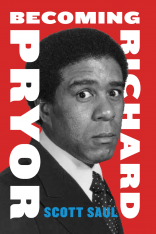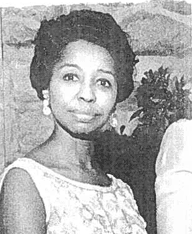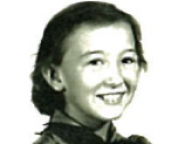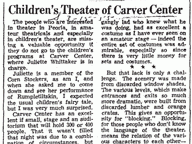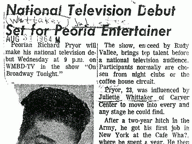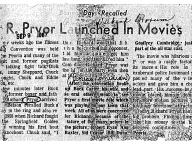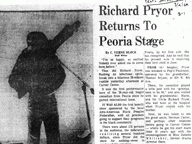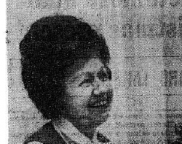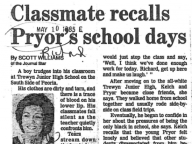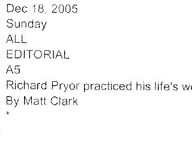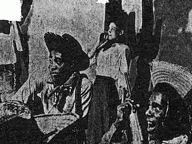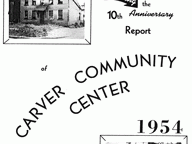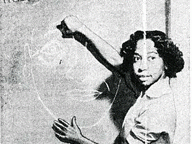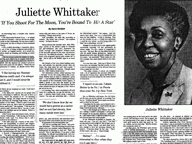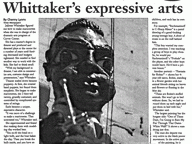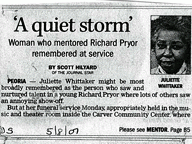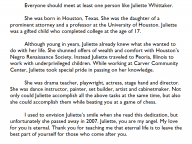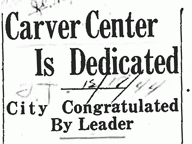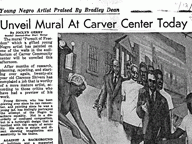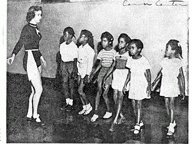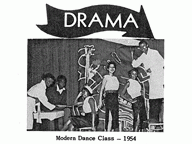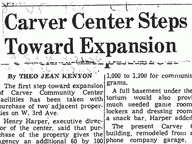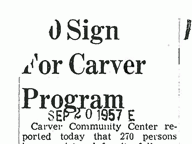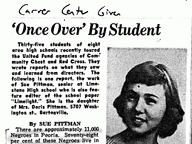The Making of a Comic
From one point of view, Richard Pryor’s childhood provided little reason for laughter. He was submerged, from an early age, within the red light district where his family made its living, an adult’s-only world of pleasure and violence. His father and grandmother were strict disciplinarians; his white classmates harassed him at school; he was molested, at a young age, by a neighborhood teenager.
Yet from another point of view, it was Pryor’s uncushioned beginnings that made him the comic he became. Surrounded by situations that could quickly turn violent, he learned to keep his eyes open to everything and so accumulated a fund of material that he tapped for decades. Starting in the late-’60s, the memories of his childhood became his creative fuel, powering a stand-up act that was like no other: disturbing and side-splitting at once.
A Language Within a Language
Living in his grandmother’s brothel, Richard Pryor grew up around the vivid set of characters—hustlers, prostitutes, numbers runners, gamblers—who filled out Peoria’s black underground and had their own point of view on the world. “These people lived the backside of life,” Pryor said of his family and their friends, “and they saw things different than if you had money and were careful what you said.”
The “sporting life,” as Pryor called it, had a sense of itself as a community. “In my neighborhood whatever you were was cool. You could be a thief, murderer, or closet queen,” he said. “We were all part of a community. If a person was a thief, you knew not to let him in your house, but to buy something from him was no big thing. Being a pimp was a form of employment.”
Yet while the red-light district had its own sense of community, it was also a difficult place to be a child. The young Richard experienced more than his share of violence. He saw it in the drag-out fights between his mother Gertrude and father Buck, in the sometimes harsh interactions between prostitutes and their johns, and in the barroom brawls that punctuated his time at the Famous Door, the tavern his family ran.
He felt the violence, too, in the way his grandmother and father disciplined him as a child. For all the disorder he saw around him, he was raised under strict principles of respecting his elders and keeping himself out of trouble. When he strayed, he felt the force of his father’s fists and his grandmother’s big hands.
All these aspects of Pryor’s childhood—the vivid characters, the sense of community, the simmering emotions, the violence he witnessed and felt—played into the unbuttoned comedian he became. As an adult, he was able to filter the confusions of his childhood into the complexities of his stage act.
Even in the brutal manner of his father, he found a method he could take up onstage. “My father…would tell the truth even if people didn’t want to hear it,” he recalled. “To a lot of people it might shock. But the words are true. It’s a language within a language that’s so to the point it makes pictures in your mind.”
Making a Stage for Himself
The young Richard didn’t set out to be a comedian, though. He simply started escaping the difficulties of his home life by spending long afternoons in local movie theaters, where he projected himself into various forms of fantasy life while receiving the beginnings of his Hollywood education. He grew to worship the B-Western star Lash LaRue, the cowboy hero who dressed all in black and punished villains with his trusty bullwhip. He watched Warner Bros. cartoons over and over, studying how different expressions flashed over the faces of the characters. He delighted in comedians like Red Skelton and Jerry Lewis, who converted social awkwardness into hilarious physical comedy.
At the predominantly white elementary schools he attended, Richard never felt in his element. Isolated from the white working-class kids of Peoria’s Valley, he found a niche for himself by toying with expectations and creating dramatic scenes in which he might star. Trying out for the peewee basketball team, he preferred to hotdog like the Harlem Globetrotters rather than merely score baskets. In class, he had a gift for taking a difficult situation and turning it to account: if he didn’t have his homework, he would launch into a long story about how and why he didn’t have his homework, converting an embarrassing moment into an opportunity to entertain his classmates. The same kids who bullied him on the schoolyard laughed at his antics—a curious phenomenon.
The young Richard got his first taste of an actual stage courtesy of Margaret Yingst, his sixth grade teacher at Blaine Sumner Middle School. Sympathetic to Richard’s struggles, she offered him his first gig: as long as Richard showed up to school on time, he had ten minutes every Friday afternoon to entertain his classmates. Richard reveled in the opportunity to try out the pantomimes and comic bits he had seen in the movies and on his family’s new TV.
Soon he performed for audiences beyond his classmates, too. He teamed up with a musical act, a group of four girls who sang as “The Glow Girls,” and the Pryor-Glow Girls double bill performed regularly for a larger group at lunchtime at Blaine Sumner, using the space in front of the school gym as their amphitheater.
At Home at Carver
Richard found a still better home for his comedy at the age of 14 when he wandered into the Carver Community Center, the central gathering place for young blacks in Peoria. There he met Juliette Whittaker and joined the Youth Theatre Guild that she ran.
In Rumpelstiltskin and other plays staged by Miss Whittaker, Richard received a crash course in theater production—from writing and directing to choreography and set design. The ceiling of his ambition was raised: Miss Whittaker imparted to her young charges both a sense of artistic seriousness and a sense of bohemian openness. Richard became her foremost protégé. The two spent long afternoons in her office together, enjoying one another’s creativity and developing ideas that might turn into the next production of the Youth Theatre Guild.
Richard was gifted at enlarging the roles he was given. When Miss Whittaker asked him to emcee the popular talent shows that Carver hosted, he was not content simply to introduce the acts. He soon made himself an act of his own—as a comedian, doing impersonations and other bits. His favorite character was an invention of his own—a black superhero, too poor to buy his own suit, who went to rummage sales and put one together out of used panty hose, a cape (which he stole), and a pair of shoes that were clownishly large: “the Rummage Sale Ranger.”
Like Richard himself, the Rummage Sale Ranger had improvised his way onto a larger stage.
